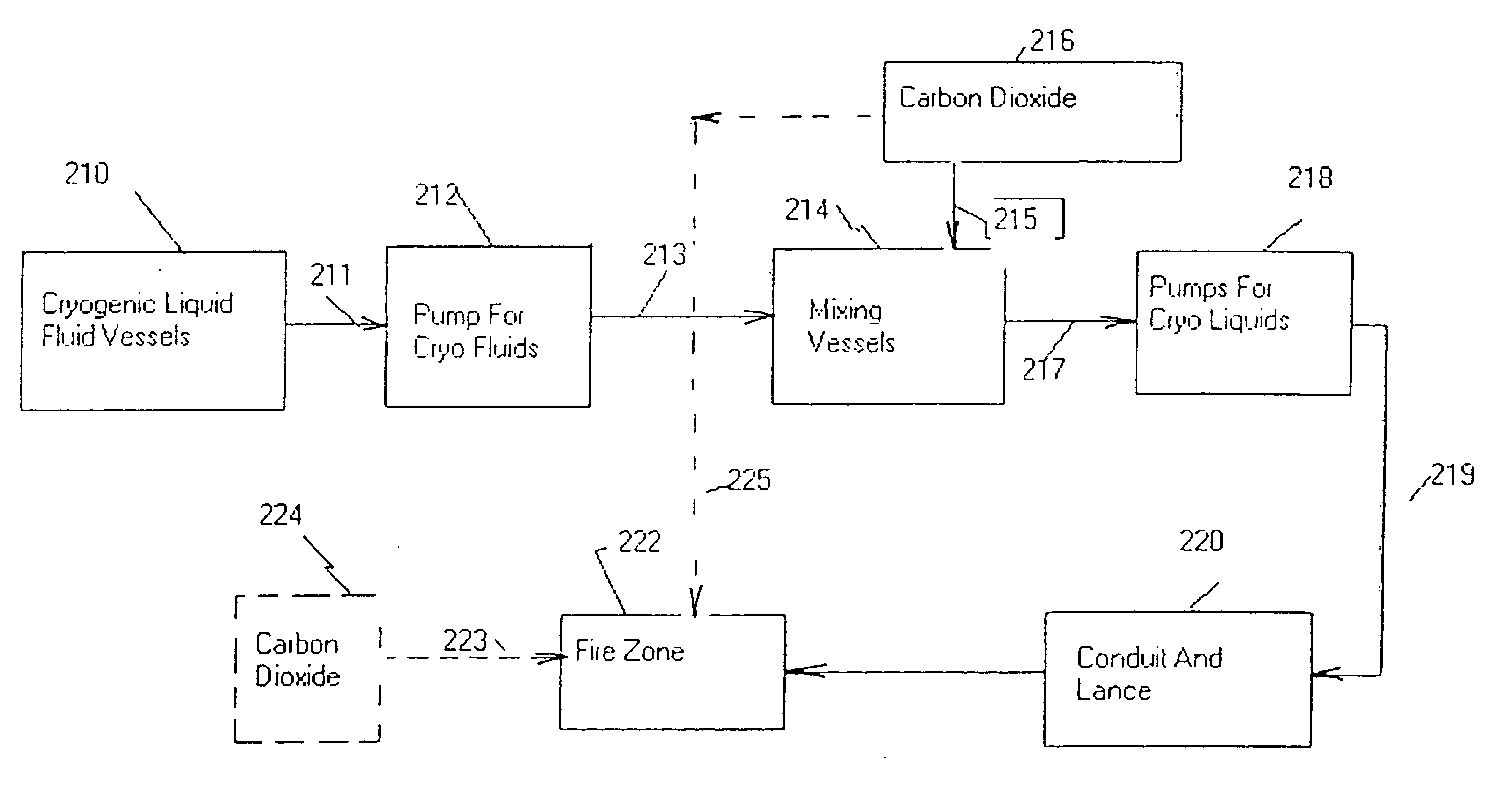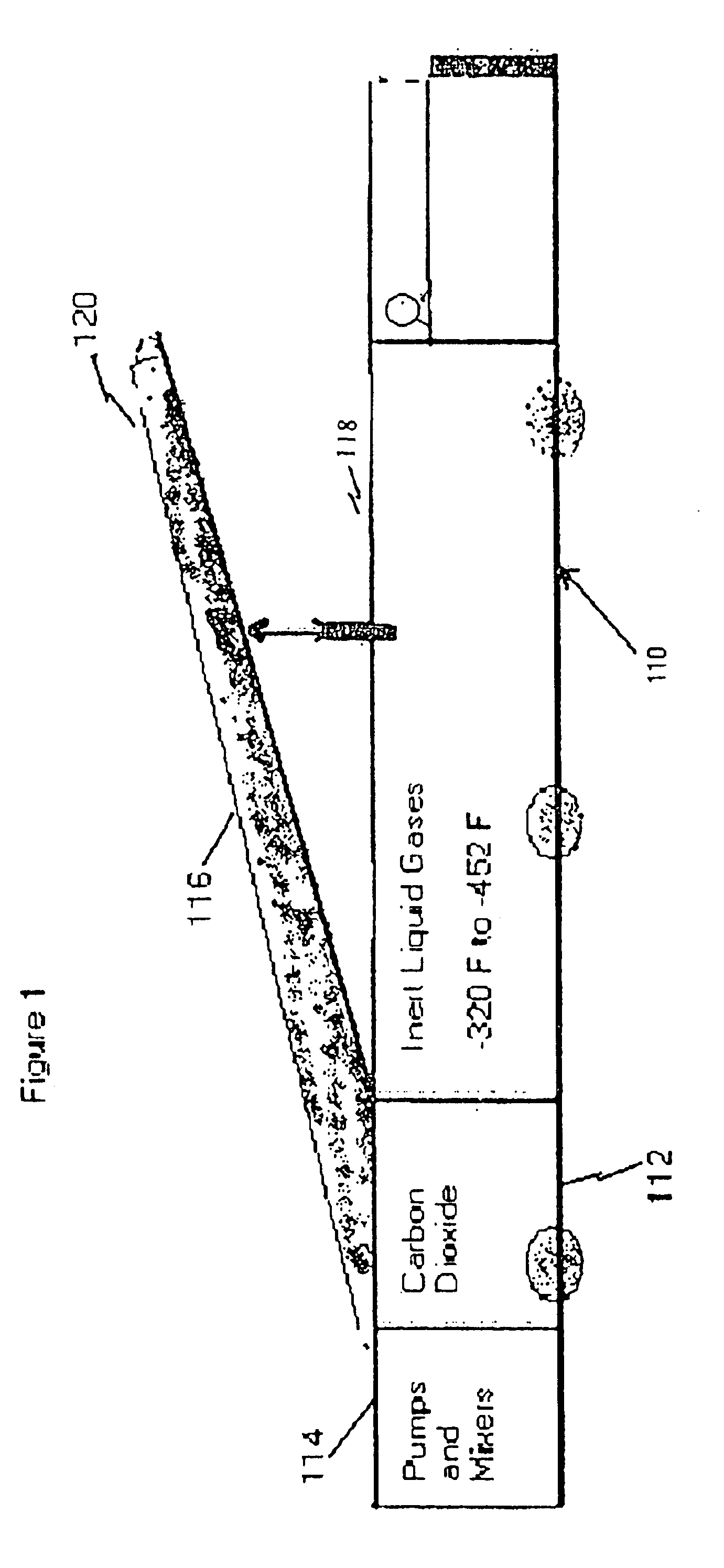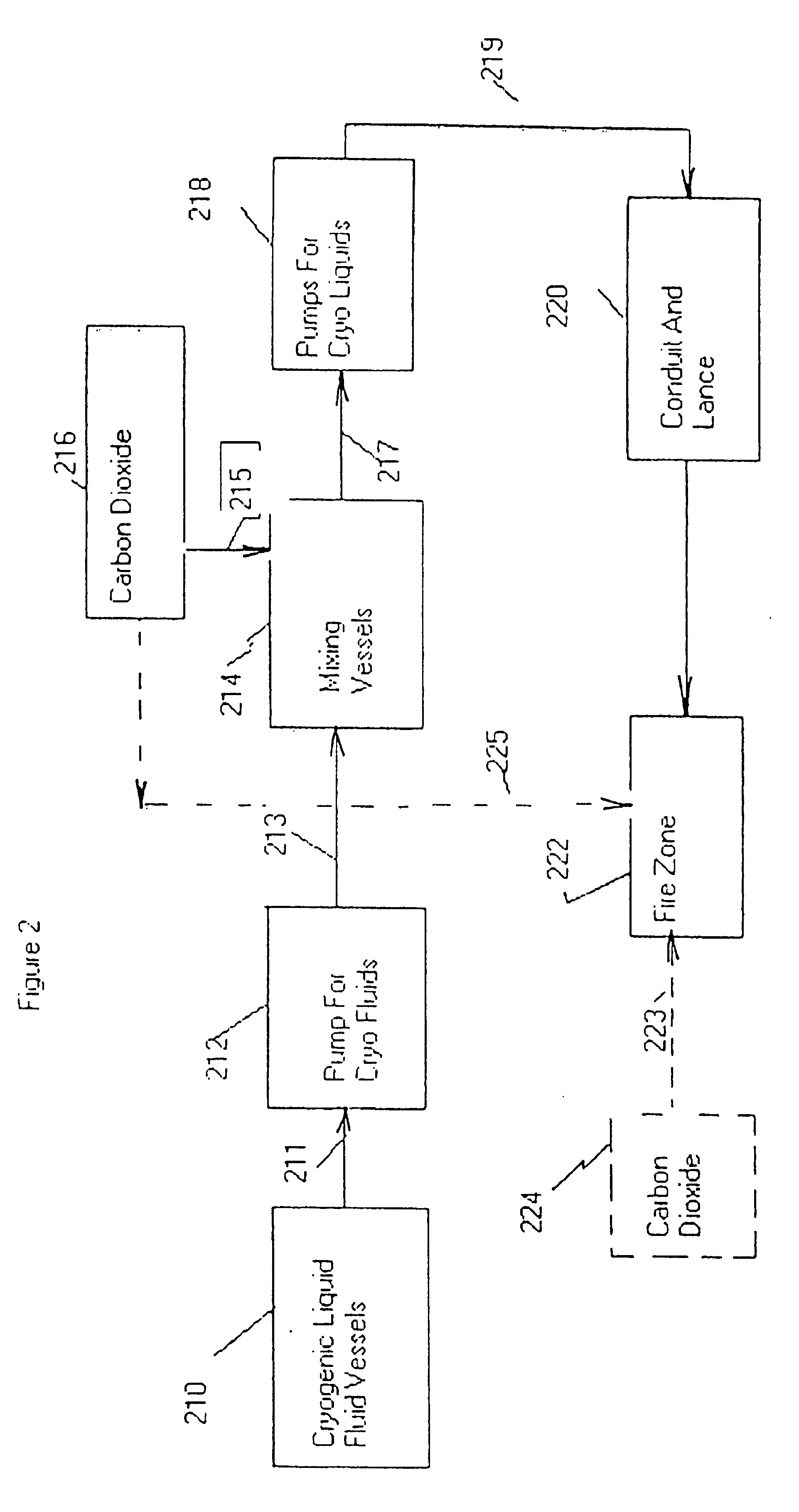Portable breathable fire extinguishing liquefied gas delivery system
- Summary
- Abstract
- Description
- Claims
- Application Information
AI Technical Summary
Benefits of technology
Problems solved by technology
Method used
Image
Examples
Embodiment Construction
This invention relates to a transportable system for delivering a fire extinguishing gas to a fire zone. The system comprises a storage vessel for a normally gaseous inert gas and a delivery means for delivering the inert gas to the fire zone. By inert is meant a gas that does not react under ambient conditions or the high temperatures of the fire zone.
In one embodiment, the storage vessel for the inert material is a cryogenic vessel that stores the inert material in liquid form. Insulated vessels or tanks capable of storing normally gaseous materials in liquid form are well known in the art and available commercially. When the inert material is in liquid form, the system can also comprise a means for vaporizing the inert material prior to delivering or introducing the inert material to the fire zone or the inert material can be delivered directly to the fire zone and vaporized in situ in the fire zone.
In another embodiment of this invention, the inert material is stored in the stor...
PUM
 Login to View More
Login to View More Abstract
Description
Claims
Application Information
 Login to View More
Login to View More - R&D
- Intellectual Property
- Life Sciences
- Materials
- Tech Scout
- Unparalleled Data Quality
- Higher Quality Content
- 60% Fewer Hallucinations
Browse by: Latest US Patents, China's latest patents, Technical Efficacy Thesaurus, Application Domain, Technology Topic, Popular Technical Reports.
© 2025 PatSnap. All rights reserved.Legal|Privacy policy|Modern Slavery Act Transparency Statement|Sitemap|About US| Contact US: help@patsnap.com



